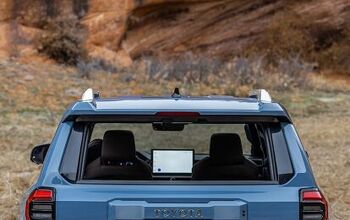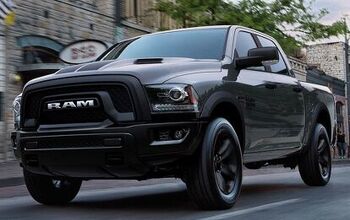PAL-V Is Now Selling the Flying Car of Your Dreams
The world’s first commercial flying car is, tentatively, here.
Dutch company PAL-V is now taking pre-orders for its new airworthy car, the Liberty. It will be offered in two trim levels: the base Liberty Sport, and the Liberty Pioneer. Either will be enough for your dangerously sexy lifestyle.
For those of you who think the Pioneer is way too expensive, fear not. The Liberty Sport will be a bargain at only $400,000! You can also opt to pay a non-refundable deposit to reserve one – $10,000 for the Sport, $25,000 for the Pioneer – if you don’t want to pay the full price just yet.
The three-wheeled Liberty actually claims some decent numbers when in drive mode, however. According to PAL-V, its unspecified road engine produces 100 horsepower, averages 31 miles per gallon, and has a range of 817 miles. It will have a top speed of 100 miles per hour, and be able to reach 62 mph in less than nine seconds.
On days when you feel like James Bond, the vehicle’s flight mode will utilize a 200 horsepower engine to achieve speeds of up to 112 mph, propelled by a pusher prop in the rear of the vehicle. Maximum range, when flying at the suggested economical speed of 87 mph, is 310 miles. A takeoff roll of 590 feet means this gyrocopter — not helicopter — won’t take off from your property unless your backyard is both sprawling and manicured.
Both the Pioneer and Sport will come with a familiarization course and introductory lessons.
Even though the claim that the Liberty “blends perfectly into everyday road traffic” isn’t quite true, the two-seater will have a small profile. In drive mode, it should be able to fit into a regular sized parking spot with ease.
Changing between drive and flight mode will take three to five minutes, though a mandatory flight check before takeoff will add another 10-15 minutes to your adventure.
You will have to wait a while for your flying car, though. According to The Independent, deliveries won’t start until the end of 2018. PAL-V will start shipping the Sport models after all 90 Pioneers have been delivered.
[Images: PAL-V]
More by Tyler Wooley
Latest Car Reviews
Read moreLatest Product Reviews
Read moreRecent Comments
- Turbo Is Black Magic My wife had one of these back in 06, did a ton of work to it… supercharger, full exhaust, full suspension.. it was a blast to drive even though it was still hilariously slow. Great for drive in nights, open the hatch fold the seats flat and just relax.Also this thing is a great example of how far we have come in crash safety even since just 2005… go look at these old crash tests now and I cringe at what a modern electric tank would do to this thing.
- MaintenanceCosts Whenever the topic of the xB comes up…Me: "The style is fun. The combination of the box shape and the aggressive detailing is very JDM."Wife: "Those are ghetto."Me: "They're smaller than a Corolla outside and have the space of a RAV4 inside."Wife: "Those are ghetto."Me: "They're kind of fun to drive with a stick."Wife: "Those are ghetto."It's one of a few cars (including its fellow box, the Ford Flex) on which we will just never see eye to eye.
- Oberkanone The alternative is a more expensive SUV. Yes, it will be missed.
- Ajla I did like this one.
- Zerofoo No, I won't miss this Chevrolet Malibu. It's a completely forgettable car. Who in their right mind would choose this over a V8 powered charger at the rental counter? Even the V6 charger is a far better drive.



































Comments
Join the conversation
This strikes me as safer than the drone taxis they are proposing for Dubai.
You're going to need two licenses, one to drive and one to fly. You're also going to need all kinds of extra aviation equipment in the cockpit, and gyro- or heli- the rotor blades are fairly delicate and will require extra inspections - and replacement is gonna cost way more than wiper blades! Run through all of the extra requirements and costs, and you'll understand why we never got flying cars - and won't get this one either.